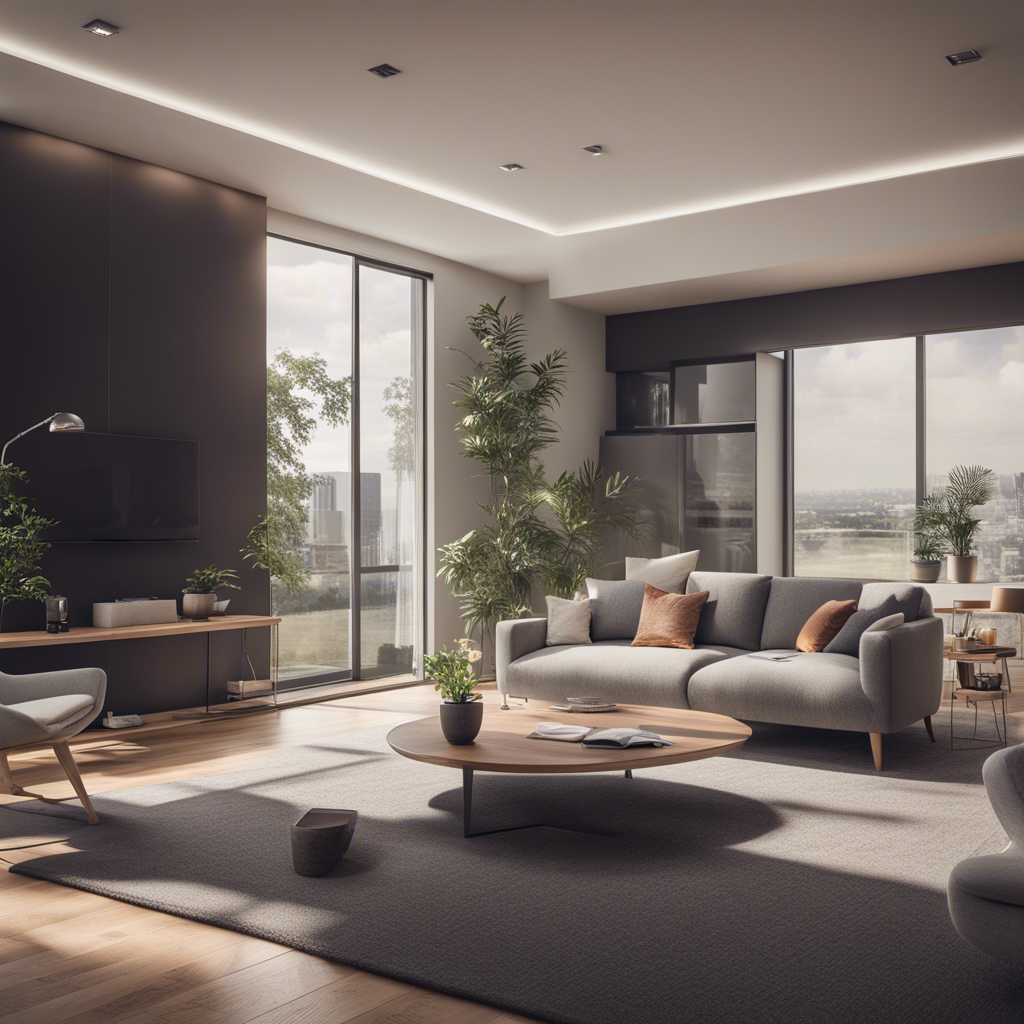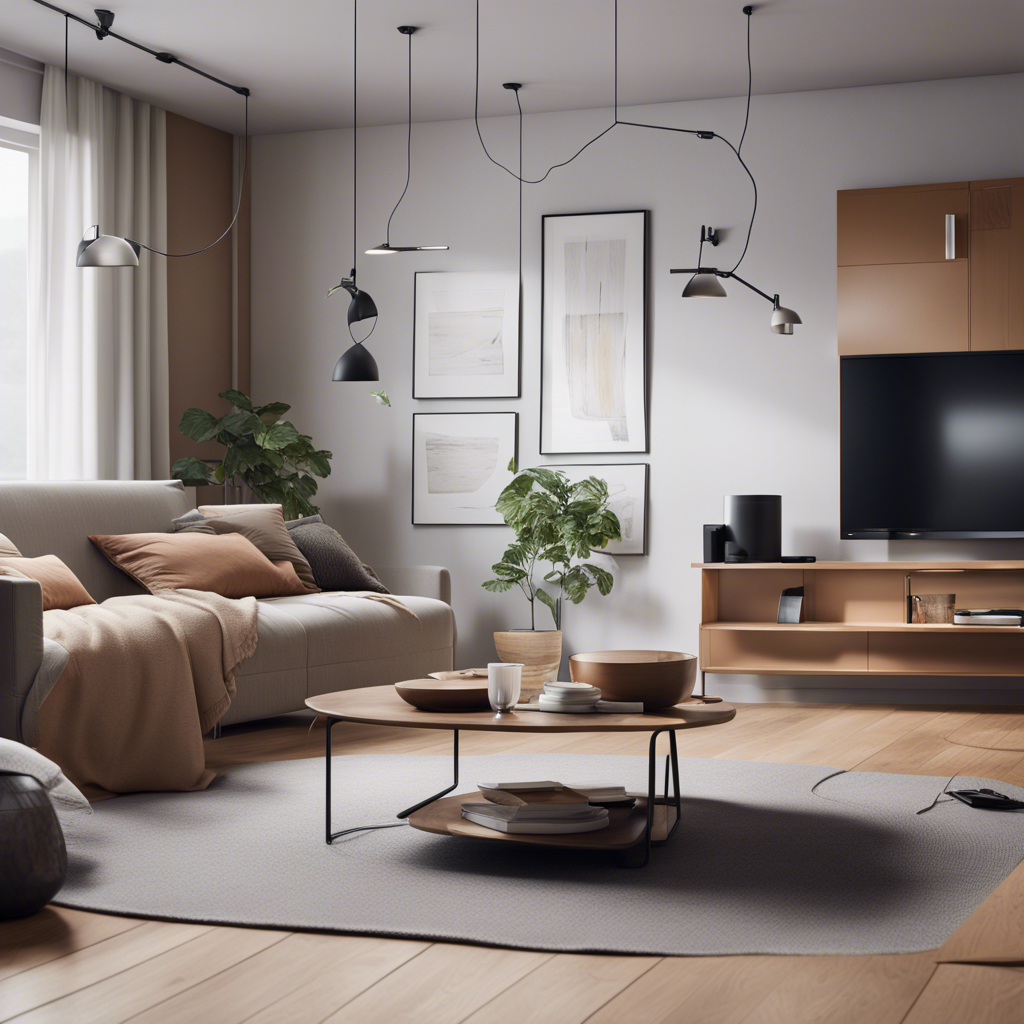Connected Living Enhanced by IoT in Modern Smart Homes
In the contemporary technological landscape, modern smart homes, powered by the Internet of Things (IoT), are transforming the way we live. By seamlessly integrating advanced technologies and devices, IoT smart homes provide a connected living experience that enhances comfort, security, and efficiency. This evolving landscape of smart home technology is not just a trend but a significant shift towards more automated and intelligent living environments.

According to a report by Statista, the number of IoT-connected devices is expected to exceed 38 billion by 2025, illustrating the burgeoning adoption of smart technologies globally. IoT smart homes harness this potential by enabling homeowners to control various aspects like lighting, security, climate, and entertainment from a centralized platform or even remotely through their smartphones. This connectivity is illustrative of how smart technology impacts daily life, bringing forth a new era of convenience and control.
Unpacking the Impact of Smart Technology on Daily Life
Automation and Control for Enhanced Living
At the core of IoT smart homes is the capability for automation, significantly impacting daily routines. From programmable thermostats like the Ecobee SmartThermostat to automated lighting systems like Philips Hue, residents can program devices to operate on their schedules, optimizing energy consumption and increasing convenience. For instance, smart thermostats learn household patterns and adjust heating and cooling accordingly, leading to energy savings and improved comfort.
Security and Monitoring
Security is a paramount concern in connected living, and IoT offers innovative solutions to monitor and protect homes. Devices such as Nest Cameras and smart locks like the August Smart Lock Pro allow homeowners to monitor their property remotely with real-time alerts. The integration of video doorbells and motion sensors provides comprehensive monitoring capabilities, enhancing security without compromising convenience.
Energy Management and Sustainability
The integration of IoT in smart homes also leads to better energy management and sustainability. Smart energy solutions facilitate real-time tracking and control of energy usage, enabling households to reduce waste and lower utility bills. By automating and optimizing energy consumption—for example, through smart plugs that cut off power to unused devices—homeowners contribute to a more sustainable future while enjoying the benefits of reduced costs. The U.S. Department of Energy highlights the potential of smart home technology in achieving national energy efficiency goals.
Practical Applications and Examples of IoT Smart Homes
Integrated Entertainment Systems
Smart home technology extends to entertainment, creating cohesive systems that enhance media experiences. Systems like Amazon Alexa and Google Nest Audio streamline music and video controls, allowing users to play, pause, and switch between playlists hands-free. These devices can connect with television and surround sound systems, providing a seamless, integrated entertainment experience.
Health and Wellness Monitoring
Modern smart homes are increasingly focusing on health and wellness through IoT technologies. Devices such as air purifiers and humidity monitors ensure optimal indoor air quality. Smart beds, like those offered by Sleep Number, can track sleep patterns and suggest changes to improve sleep quality. This health-focused approach represents a significant impact of smart technology, supporting healthier lifestyles through connected living environments.
Smart Kitchen Appliances
IoT smart homes are revolutionizing kitchens with connected appliances. Smart refrigerators, like the models from Samsung’s Family Hub series, provide features such as internal cameras, automated grocery lists, and meal planning through app integration. These innovations streamline meal preparation and storage, reflecting the broader trend of home automation and its practical applications in daily life.
The Future of IoT in Connected Living
Advancements in AI and Machine Learning
The future of IoT smart homes is closely tied to advancements in artificial intelligence (AI) and machine learning. These technologies will drive even greater personalization and efficiency in smart home environments. For example, AI can analyze usage data to predict and recommend energy-saving behaviors. Systems like Apple’s HomeKit and Amazon’s Alexa are continually evolving, integrating more advanced learning capabilities to enhance user experiences.
Interoperability and Standardization
A critical factor shaping the future landscape of connected living is the interoperability and standardization of IoT devices. As more manufacturers embrace interoperability standards, such as those advocated by the Z-Wave Alliance, users will experience smoother integration of diverse devices in their smart homes, ensuring compatibility and simplifying management.
Challenges and Considerations
Despite the numerous advantages, the widespread adoption of IoT in smart homes presents challenges, including security risks and privacy concerns. As highlighted by CSO Online, securing IoT devices against cyber threats is paramount. Ensuring robust security protocols and user education will be vital in overcoming these challenges and fostering trust in smart home technology.

Frequently Asked Questions
What is a smart home?
A smart home is a residence equipped with a network of IoT devices that automate and optimize functions such as lighting, climate control, security, and entertainment. This connectivity allows homeowners to manage these systems remotely, enhancing convenience and safety. For a more detailed understanding, refer to this TechRadar article.
How does IoT impact daily life in smart homes?
IoT revolutionizes daily life by providing automation and control over home devices, improving efficiency, security, and comfort. From smart thermostats that optimize heating and cooling to automated lighting systems that adjust according to time of day, these technologies make everyday tasks more manageable and energy-efficient.
Are there security risks with IoT devices in smart homes?
Yes, IoT devices can pose security risks if not properly secured. Vulnerabilities can lead to unauthorized access and data breaches. It’s crucial to implement strong passwords, regular updates, and consider investing in comprehensive security systems. For more tips, check Kaspersky’s guide on IoT security risks.
Can IoT smart homes contribute to energy savings?
Yes, IoT smart homes can significantly contribute to energy savings by optimizing the energy use of appliances and systems. Devices like smart thermostats and automated lighting reduce unnecessary power consumption, lowering energy bills and environmental impact. The U.S. Department of Energy lists several trends that illustrate these benefits.
What future innovations can we expect in IoT smart homes?
Future innovations in IoT smart homes may include increased use of AI for smarter automation, enhanced security protocols, and greater interoperability among devices. As smart technology evolves, homes will become more efficient and personalized to individual preferences. Organizations like the Computing Technology Industry Association (CompTIA) provide insights into technology trends shaping the future of smart homes.
Conclusion
In summary, IoT represents the future of modern smart homes, with its ability to transform everyday living through enhanced connectivity and intelligent automation. By integrating smart home devices, people can experience a new level of convenience, safety, and efficiency in their daily routines. As technology advances, we can anticipate even more sophisticated solutions that will continue to reshape our notions of home living.
For those interested in incorporating smart technology into their households, resources like CNET’s smart home guide can be invaluable in understanding the available options and features. As smart homes become more prevalent, staying informed about trends and advancements remains crucial for making informed decisions.
As we move forward, the potential of IoT in modern smart homes will undoubtedly open new horizons for connected living, offering innovative solutions that cater to the dynamic needs of modern lifestyles. This ongoing evolution invites ongoing engagement with emerging technologies to harness their full potential.
Suggested Video Topics
- The Future of IoT: Upcoming Innovations for Smart Homes
- How IoT is Changing Home Entertainment Systems
- Smart Home Security: Protecting Your Connected Environment



